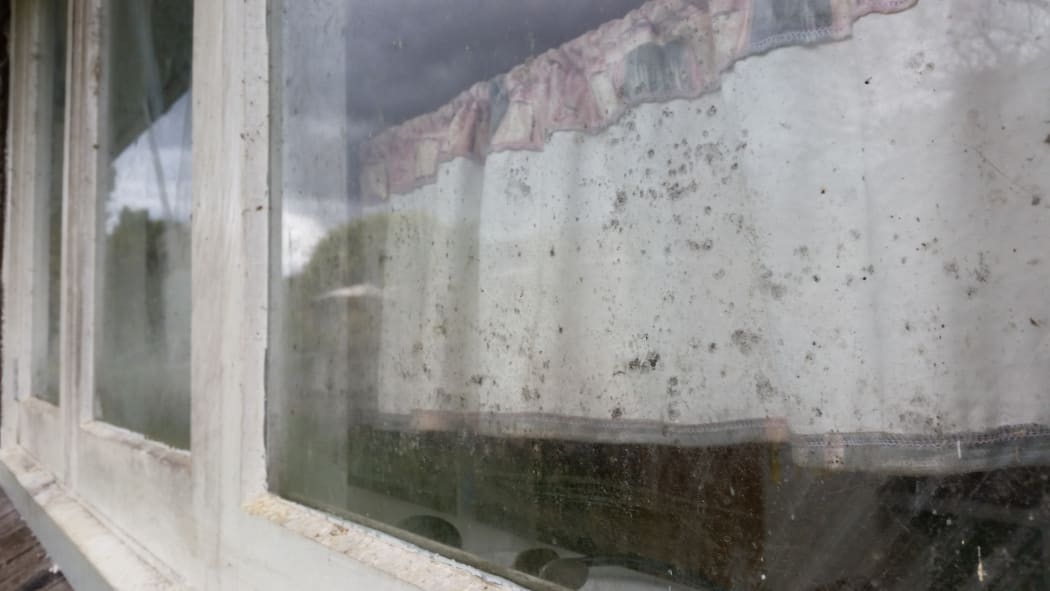We lead the world in rubbish housing stock, says urbanist Bill McKay. And as the weather gets colder, many New Zealanders face another winter in cold and damp homes.
The Healthy Homes Guarantee Act was passed in December last year and it requires tenancies to be decently insulated and heated, but the standards associated with that are yet to be announced.

Photo: RNZ/Lauren Baker
McKay , a senior lecturer in the School of Architecture and Planning, says there is doubt about the standard of heating landlords must put in their rentals.
“We’ve already got a lot of legislation on this. In 1947 housing improvement regulations required heating in the living room of a rental, but my wife and I were renting and we didn’t have one of those.
“The problem is the landlord could plug in an electric heater, but if you can’t afford the electricity what do you do?”
We tend to have a strange attitude to warm, dry housing he says.
“We do have some very poor housing stock and we’ve got a bit of an attitude of it didn’t do them, [older generation] any harm and it won’t do young kids any harm, but it does. We’ve got 40,000 kids hospitalised each year for respiratory illnesses in this country directly related to the state of their homes, and many of them are from rented homes including Housing New Zealand.”
Children with these problems leave hospital and go back to the very homes that caused the problem in the first place, he says.
“Half are readmitted to hospital, so we’re in a terrible state and we’ve got to take it much more seriously.
“Peter Gluckman [chief science advisor] says mould does more damage to people than meth does.”
So if you’re living in a rented house what can you do to help? Moisture control is key, he says.
“It’s reducing those sources of moisture. When we’re drying clothes or boiling rice we’re generating moisture, and that hangs around in the atmosphere of our houses.”
Cheap forms of heating also compound the problem.
“Those people that can't afford electricity or good heating buy those cheapest forms of heating which are those LPG freestanding gas things, and they pump out, as well as a few toxic gases, half a litre of water an hour.
“You’ve got all the windows shut and the curtains drawn and all that moisture hits cold spaces and it condenses and we get moist walls and windows, and that’s where we get mould.”
Ventilation is your friend, he says.
You should air bedrooms and living rooms in winter, it’s not just a principle for summer, he says.
Aluminium windows with security limiter catches should be left ajar during the day, you need to change the air twice a day, he says.
Extractor fans are good in kitchens and bathrooms as long as the warm, moist air is expelled to outside the house.
“Be careful that extractors are not pushing moisture warm air into roof cavity or under floor, because that will just sit out there and will cause problems as well.”
Domes on top of showers also do a very good job controlling moisture, he says.
Maximising thermal capacity where the sun heats a material during the day is trickier, because it relies on good design at the outset, he says.
Thermal capacity is where a heavy material, such as stone or concrete, heats in the sun during the day and re-radiates that heat at night: the principle of passive heating.
Sun on a concrete slab works in that same way as stones in a hangi, he says. But only if the concrete (or tile or stone) is not by rugs or carpet which act as insulators and negate the benefit of passive heating.
Concrete will store cold just as it does heat, so windows have to be placed where sun can enter the house and heat the thermal mass in the home.
“It’s a design issue, we’re planning on building a 100,000 or so houses in the next few years and we need to use all of these principles rather than relying on the old three bar heater.
“We’ve got all this free sunlight out there and we have to use good design and exploit it."
Passive houses cost more up front, but cost very little to heat in the long run, McKay says.
“They are super insulted, super airtight but have a complicated system to get rid of moisture but not heat. They require very little heating, maybe three days in Auckland in the middle of winter.”

